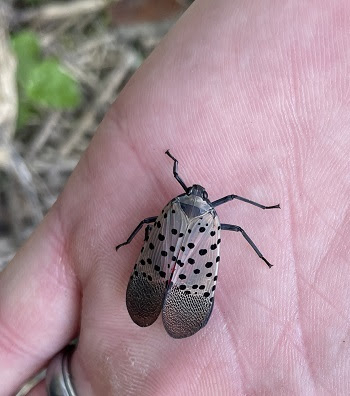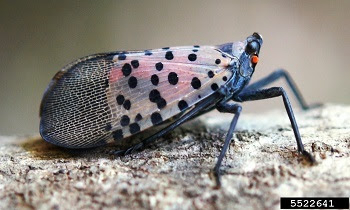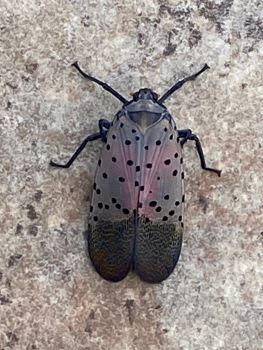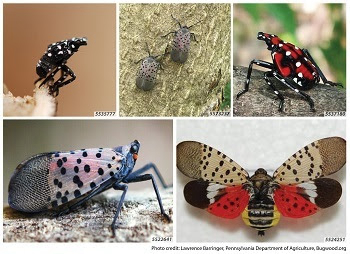Invasive spotted lanternfly: See it. Squish it. Report it.

Now is the prime time to be on the lookout for the invasive spotted lanternfly! Late summer to early fall is the most likely season to spot the colorful planthoppers, and the departments of Natural Resources and Agriculture and Rural Development are urging Michiganders to report any potential sightings of these destructive invasive pests.
“We’ve heard reports of spotted lanternflies swarming New York City and covering beaches on the Jersey Shore. We’d like to prevent similar scenarios in Michigan,” said Rob Miller, MDARD’s invasive species prevention and response specialist. “Everyone can help by looking for spotted lanternfly and reporting suspected sightings.”
The spotted lanternfly spreads to new locations by hitchhiking or laying eggs on vehicles and equipment that have traveled through infested areas. If you are returning from out of state, it’s important to look for and destroy spotted lanternfly insects and egg masses that may be hiding on cars, trailers, firewood, camping gear or anything that’s been outside.
The Michigan Invasive Species Program’s new campaign – “See it. Squish it. Report it.” – reminds Michiganders and visitors of the simple steps they can take to prevent new introductions of spotted lanternflies in the state.
“If you see a spotted lanternfly, yes, we really do want you to squish it if you can. Then, take a photo or two and report it to us through the online Eyes in the Field reporting system,” said Miller. “It’s important to get to know what the spotted lanternfly looks like, though, because we don’t want to target harmless native insects with pretty wings.”
Billboards along major freeways and print material available through Michigan’s cooperative invasive species management areas were developed with support from the Environmental Protection Agency’s Great Lakes Restoration Initiative.
How to spot the spotted lanternfly
Take a few minutes to become familiar with spotted lanternfly life stages.
|
Be aware of look-alikes
Public reports to Eyes in the Field have helped identify some insects commonly mistaken for the spotted lanternfly.
- Several native moth species have red underwings, but their upper wings are striped or mottled.
- Some insects have spotted wings that are translucent or differ in color from spotted lanternfly adults.
- Common insects including boxelder bugs and red milkweed beetles have similar colors and patterns as spotted lanternfly nymphs, but their shapes are distinct.
To better identify spotted lanternfly life stages and rule out look-alikes, visit the spotted lanternfly look-alike page.
Status in Michigan
Currently, there is one confirmed population of spotted lanternflies in Michigan. The infested site, a county-owned parcel in Pontiac, is being managed by a team including Oakland County, MDARD, Michigan State University and the U.S. Department of Agriculture’s Animal and Plant Health Inspection Service staff. Management includes treatment and/or removal of invasive tree of heaven – spotted lanternfly’s preferred host – and regular survey and monitoring of the insect population. Extensive surveys in August found no evidence of spotted lanternfly spreading beyond the originally infested site.
Why be concerned?
The spotted lanternfly feeds on more than 70 different plants, including grape vines and hardwood trees. It sucks sap from host plants while secreting large amounts of a sugar-rich, sticky liquid called honeydew. This honeydew and the resulting black sooty mold can kill plants and foul surfaces. The honeydew often attracts other pests like yellow jackets, flies and ants, affecting outdoor recreation and complicating crop harvests. Swarms of spotted lanternfly adults can reach nuisance levels that hinder outdoor activities.
More information on the spotted lanternfly, including identification, look-alike species and how to report, is available at Michigan.gov/SpottedLanternfly.






